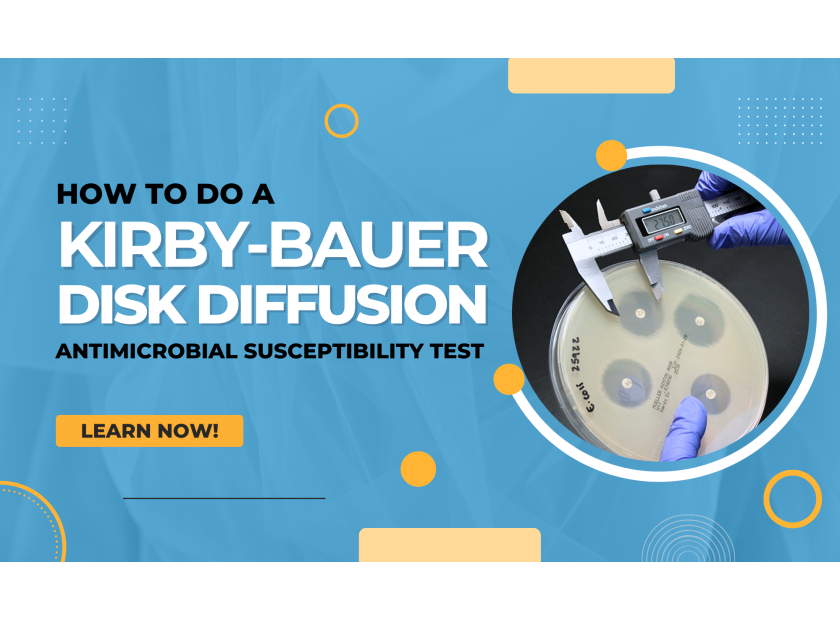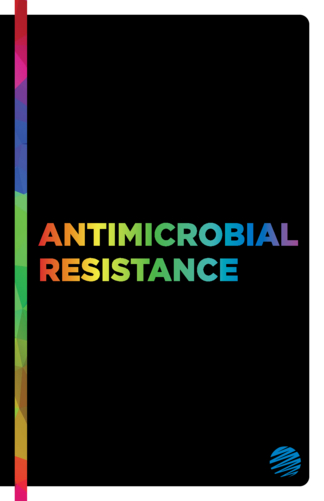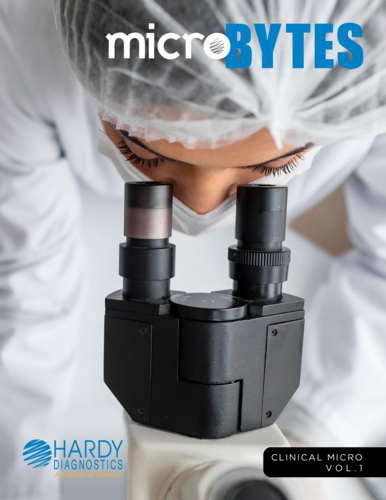Mastering the Kirby-Bauer Technique: From Zones to Results
What is the disk diffusion method for antimicrobial susceptibility testing?
The purpose of the Kirby-Bauer disk diffusion susceptibility test is to determine the in vitro susceptibility of bacteria and fungi to various antimicrobial compounds. It is a standardized test that can be performed in a laboratory setting and is a valuable tool for both clinicians and microbiologists. The main benefits of this test are the flexibility of drug selection and obtaining overnight results. It is used to help guide the selection of antimicrobials for the appropriate treatment of infections caused by bacteria and fungi.
The test is performed by placing antimicrobial impregnated filter paper disks on the surface of an agar-containing medium that has been inoculated with the patient’s microorganism. Upon contact with the agar surface, the antimicrobial agent immediately diffuses from the disk into the surrounding agar where it may inhibit the growth of the microorganism. If the microorganism is inhibited by the antimicrobial agent, a clear zone of ‘no growth’ will be present around the paper disk after incubation. The presence or absence of a zone of inhibition around the disks is a measure of the microorganism’s susceptibility to the antimicrobial agent.
Materials needed to perform a Kirby-Bauer disk diffusion test include:
- Mueller Hinton agar plates
- Sterile cotton swabs, or dacron swabs
- Tryptic Soy Broth
- Antimicrobial disks
- 0.5 McFarland Turbidity Standard
- A Wickerham card with a white background and contrasting black lines, or a calibrated photometric device
- Forceps or a disk dispensing apparatus
- Ruler or sliding caliper
- Permanent marker
- Personal protective equipment such as gloves and a lab coat
- CLSI, M100, zone size interpretive guide
All products mentioned can be found on our online store, HERE!
Procedure
The following procedure is performed in accordance with the 13th edition of the CLSI M02 document, “Performance Standards for Antimicrobial Disk Susceptibility Tests.” Refer to the current revision of the CLSI M100 document for the most updated recommendations, footnotes, and comments for testing conditions, reporting suggestions, and warnings. This procedure will cover an example of testing non-fastidious bacteria in the family, Enterobacterales, on standard Mueller Hinton Agar medium.
Please note that this tutorial is only intended as a guide, and is not a replacement for the instructions for use (IFU) for products referenced in this tutorial.
Step 1: Prepare the plates
Remove the Mueller Hinton agar plates from refrigerated storage. Allow the media to acclimate to room temperature and ensure the surface of the medium is dry before use.
Label the agar plates with the microorganism or patient specimen to be tested.
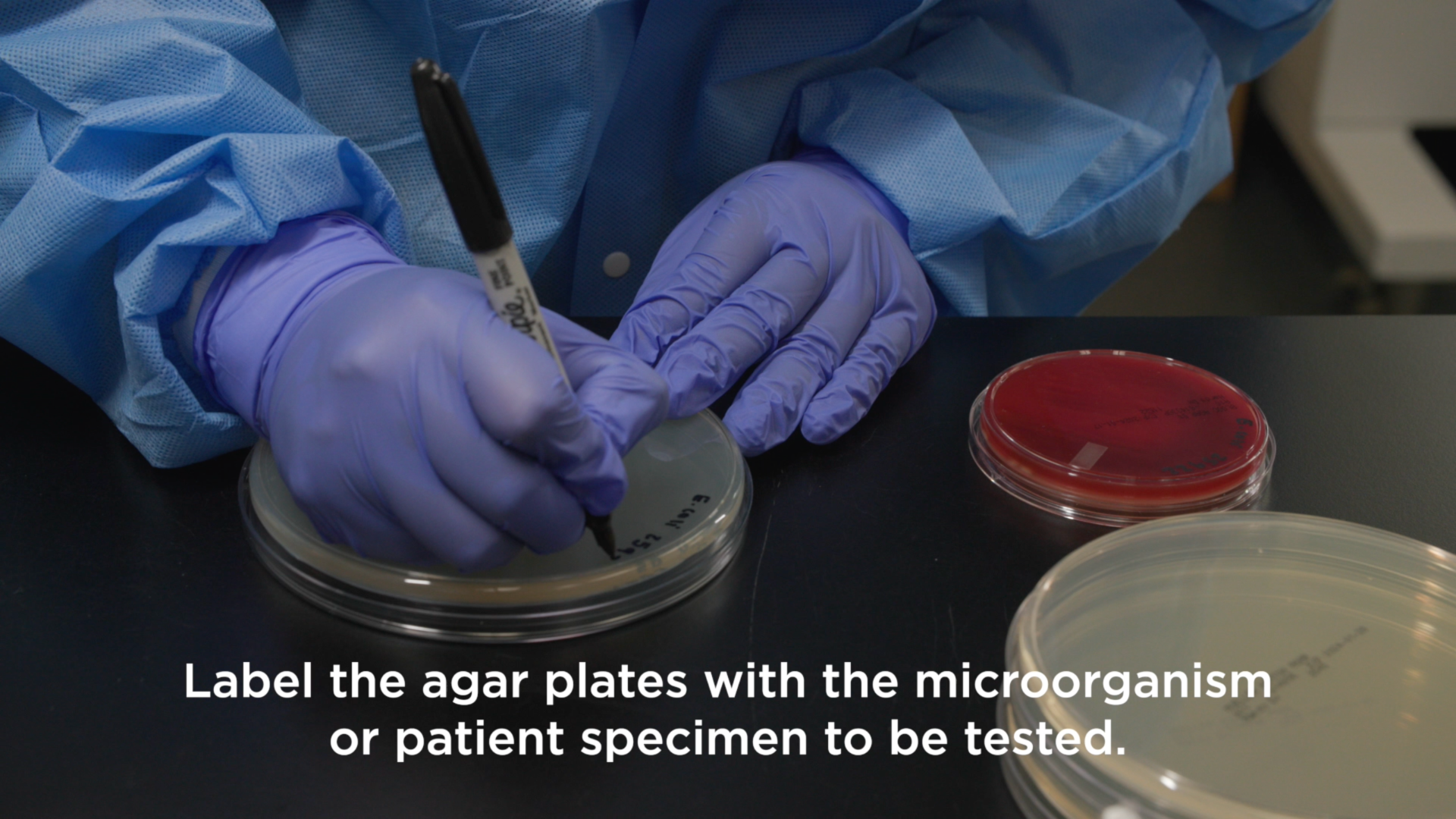
Step 2: Make suspension
Make a direct broth suspension of 3-5 similar isolated colonies selected from an 18 to 24 hour non-selective agar plate.
Adjust the suspension to achieve a turbidity equivalent to a 0.5 McFarland standard. Use a calibrated photometric device, or, if performed visually, use adequate light to compare the inoculum tube and the 0.5 McFarland standard against a card with a white background and contrasting black lines.
If needed, make adjustments to the turbidity. Add more organism if the suspension is too light. Add more Tryptic Soy Broth if the suspension is too heavy.
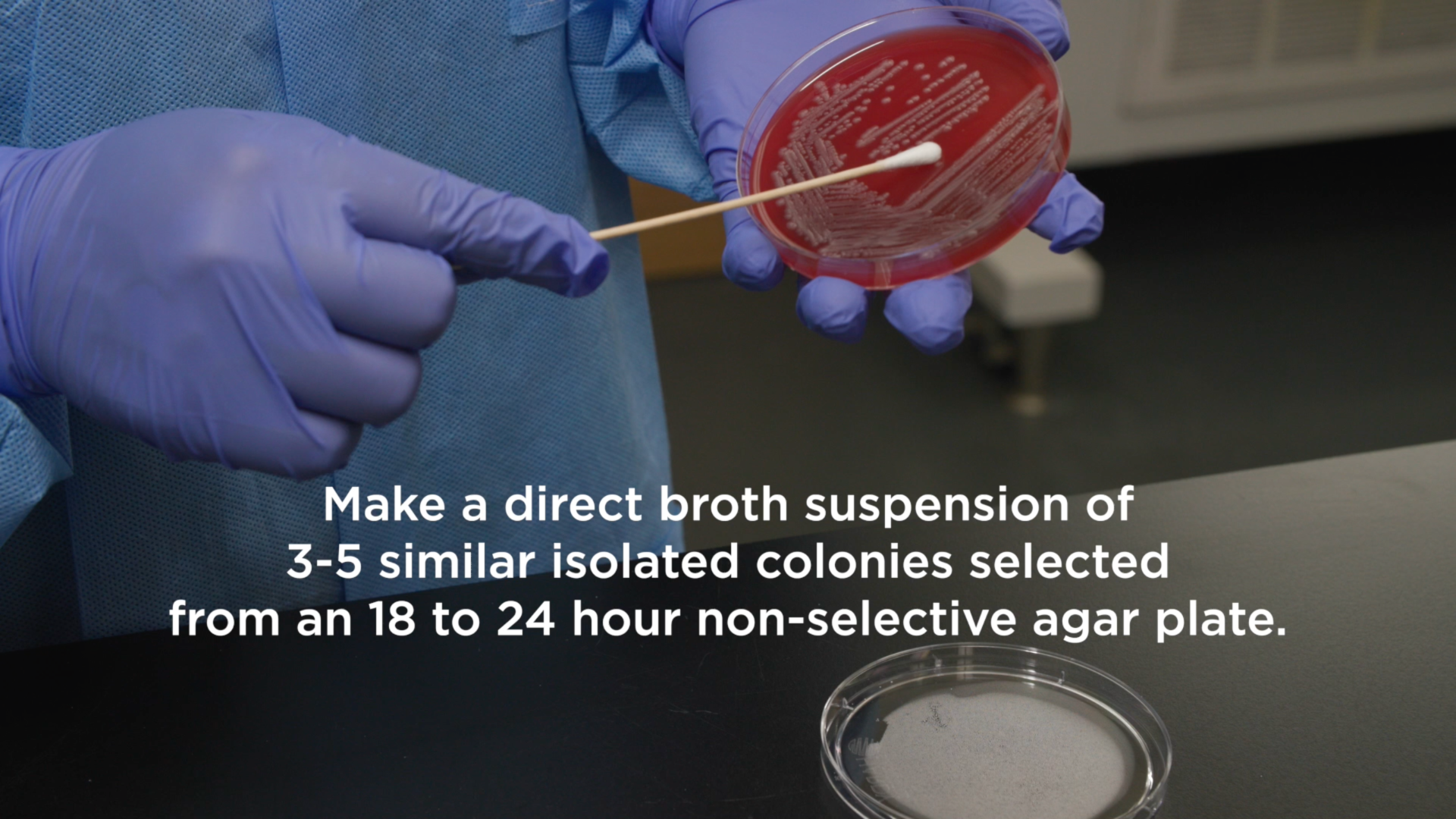
Note: Preferably, the inoculum is applied to the Mueller Hinton agar as soon as the suspension is prepared. The inoculum must be applied to the Mueller Hinton agar within 15 minutes of preparation.
Step 3: Inoculate the plates
Inoculate the agar plates with the microorganism by dipping a sterile cotton swab into the 0.5 McFarland adjusted suspension.
Rotate the swab several times in the liquid, and press firmly on the inside wall of the tube above the fluid level to remove excess fluid from the swab.
Streak the inoculum across the entire surface of the agar plate and rotate the plate approximately 60 degrees. Continue streaking two more times so the streak lines overlap, rotating the plate approximately 60 degrees each time to ensure an even distribution of inoculum. Finally, swab the rim of the agar. This inoculation method will produce a bacterial lawn culture that is uniform over the entire surface of the medium.
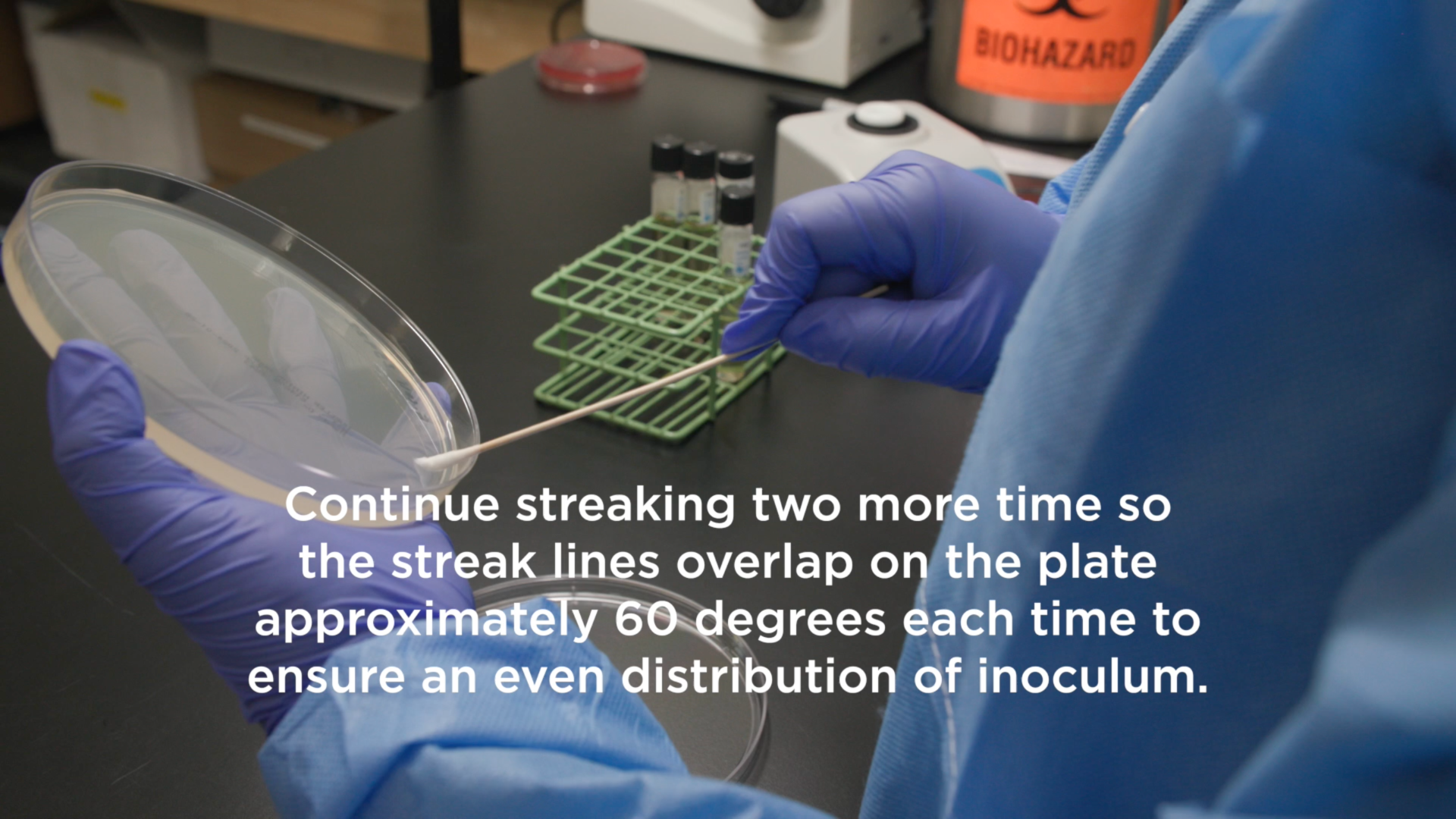
Step 4: Place the disks
Dispense the antimicrobial disks onto the surface of the inoculated agar plate using aseptic technique. Whether the disks are placed individually or with a dispensing apparatus, they must be distributed evenly so they are at least 24 millimeters apart. Place disks that produce predictably small zones next to those that produce larger zones to avoid overlapping zones. Avoid placing disks too close to the edge of the plate. Place no more than 12 disks on a 150mm Mueller Hinton plate, and no more than 6 disks on a 100mm plate.
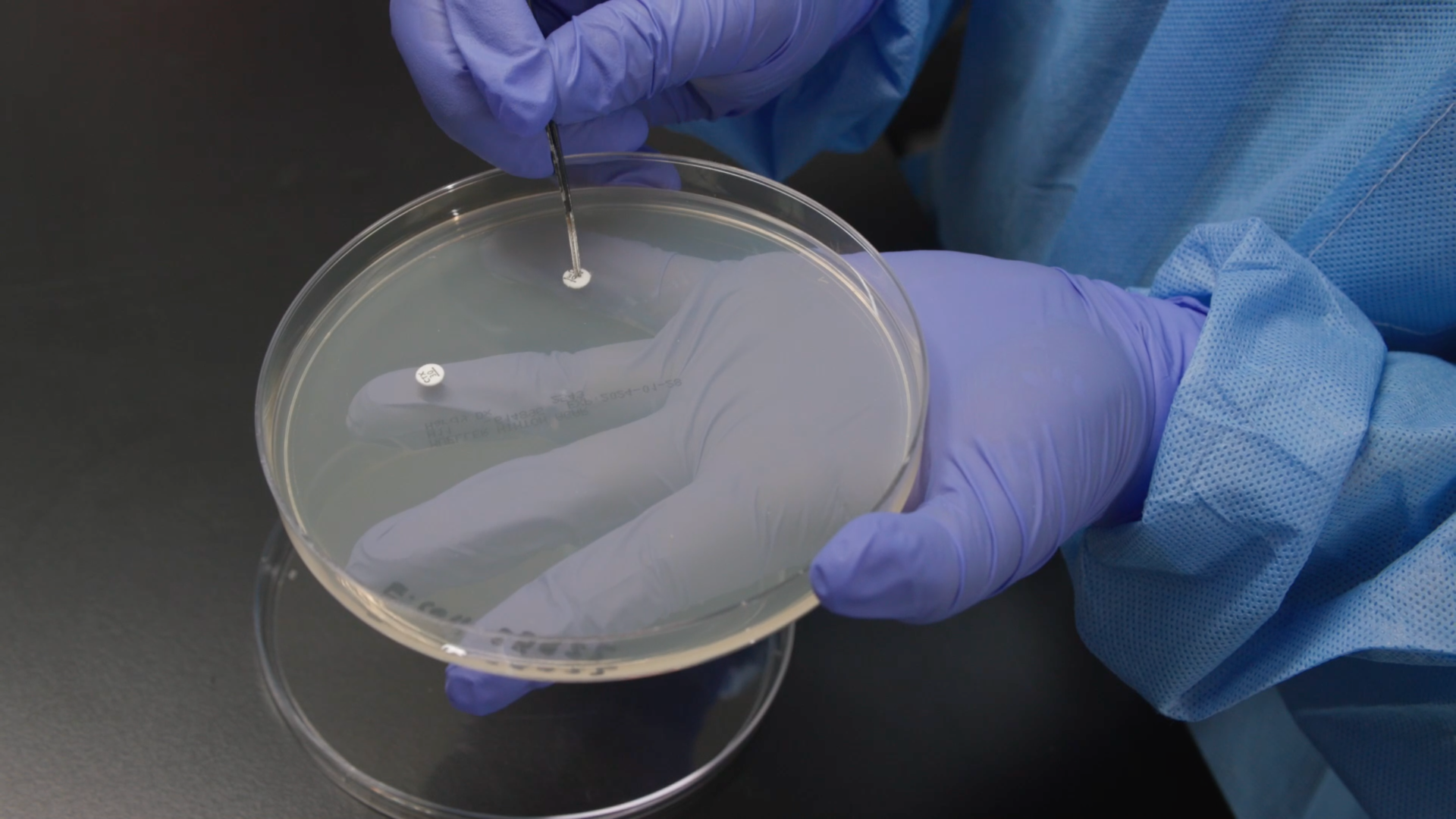
Press each disk down to ensure complete contact with the agar surface. Since the antimicrobial agents diffuse almost instantaneously, a disk should not be relocated once it has come into contact with the agar surface. Instead, place a new disk in another location on the agar, if needed.
Step 5: Incubate
Invert the plates and place them in an incubator set to 35 degrees Celsius, plus or minus 2 degrees, within 15 minutes after the disks have been placed.
Incubate the plates for 16 to 18 hours.
Note that incubation duration and conditions may vary depending on the microorganism and antimicrobial agent combination.
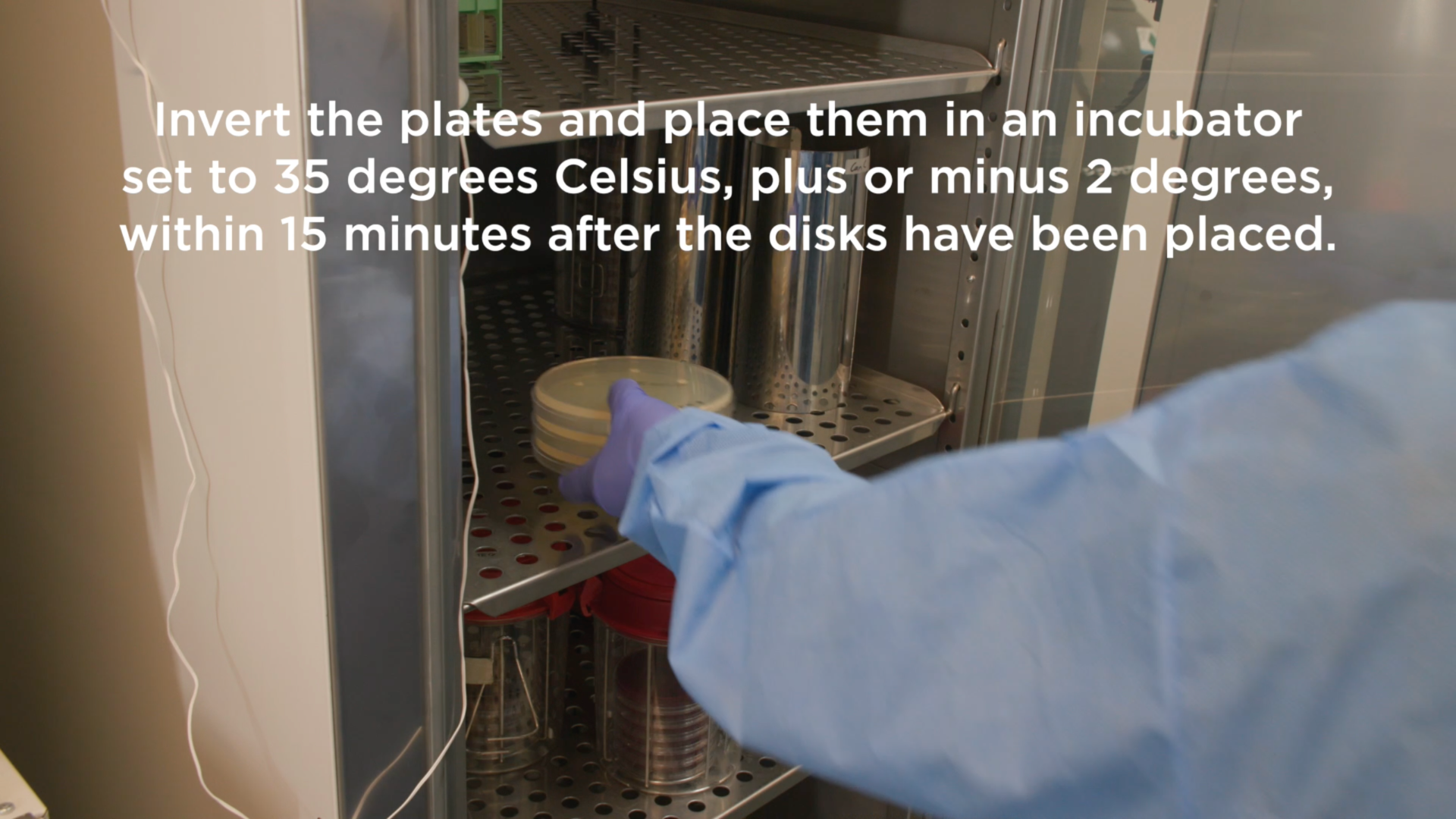
Step 6: Measure the zones of inhibition
If the plate was satisfactorily streaked and the inoculum concentration was correct, the resulting zones of inhibition will be uniformly circular and there will be a confluent lawn of growth after incubation. If individual colonies are apparent, instead of the expected confluent lawn of growth, the inoculum concentration was too light and the test must be repeated.
Measure the zones of inhibition of the inverted Petri plate by holding sliding calipers, or a ruler, a few inches above a black, nonreflecting background illuminated with reflected light. The diameters of the zones of complete inhibition, which includes the diameter of the disk, must be measured to the nearest whole millimeter. The zone margin should be considered the area showing no obvious visible growth detected with the unaided eye. Exceptions are detailed in the CLSI M02.
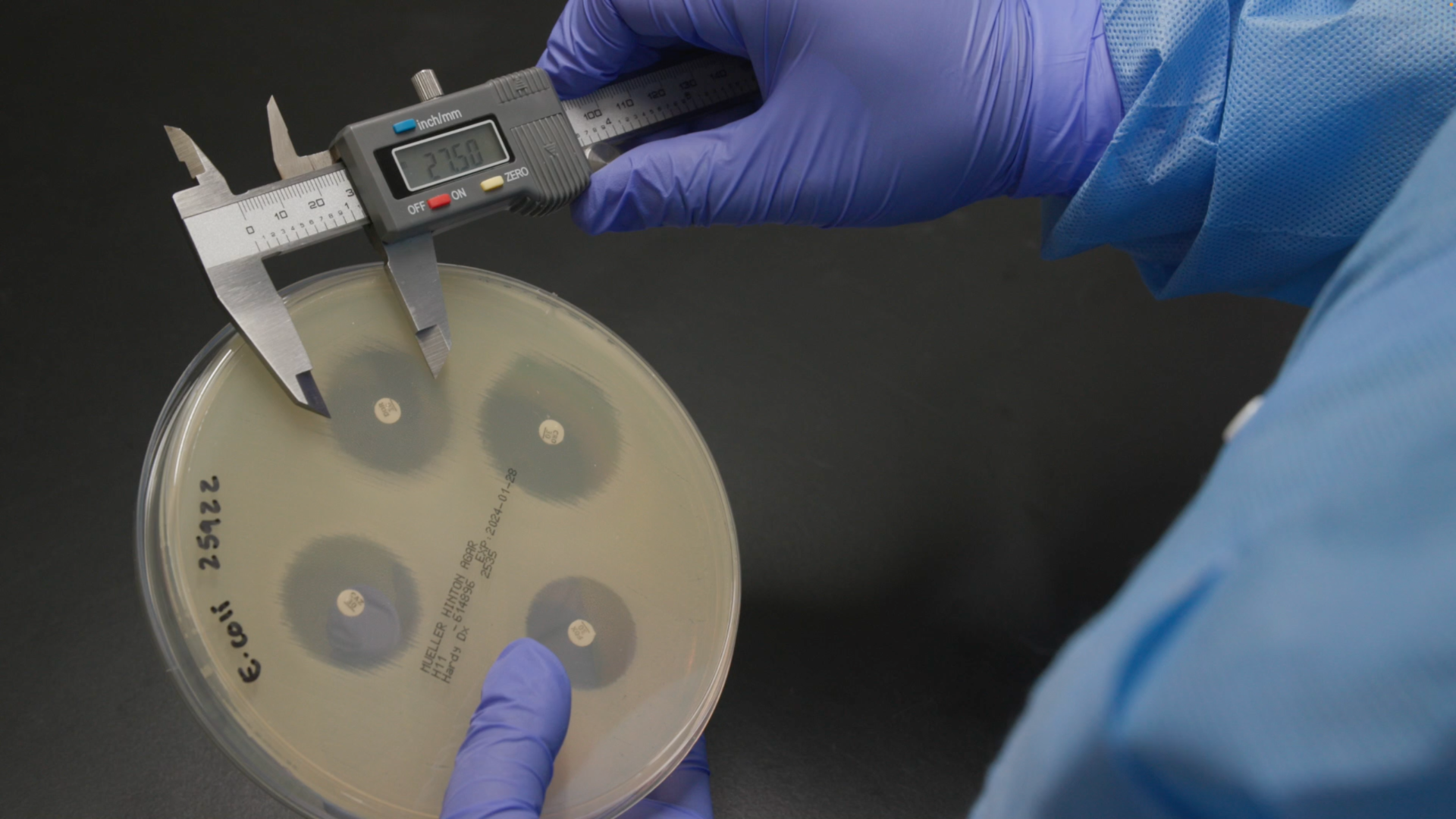
Once the zone sizes are measured, the zone measurements should be interpreted by referring to CLSI M100 breakpoint tables, the FDA STIC, or other recognized standards depending on the regulatory adherence of each laboratory.
Interpretation of Results
Current breakpoints for non-fastidious and fastidious bacterial pathogens are listed in the Clinical and Laboratory Standards Institute M100 document titled, “Performance Standards for Antimicrobial Susceptibility Testing” and on the Food and Drug Administration’s STIC website. STIC stands for: susceptibility test interpretive criteria. The CLSI M100 and the FDA STIC are both available at no charge online. Breakpoints may change over time when new data or resistance mechanisms emerge. It is important for laboratories to use current breakpoints. Using outdated clinical breakpoints risks mismanaging patient therapy.
Conclusion & Resources
The Kirby-Bauer disk diffusion test is a standardized method for determining the susceptibility of bacteria and fungi to various antimicrobial compounds. It is a valuable tool for clinicians and microbiologists and can be used to help guide the selection of antimicrobials for the treatment of bacterial infections. By following these steps and referencing the relevant standards for current procedures, recommendations, and interpretive criteria, you can ensure that your Kirby-Bauer disk diffusion tests are accurate and reliable.


